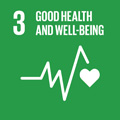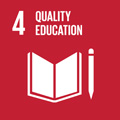- Docente: Patrizia Di Giacomo
- Credits: 2
- SSD: MED/45
- Language: Italian
- Teaching Mode: In-person learning (entirely or partially)
- Campus: Bologna
- Corso: Second cycle degree programme (LM) in Nursing and Midwifery Sciences (cod. 8488)
-
from Dec 17, 2025 to Jan 16, 2026
Course contents
The method of the discipline: Nursing and midwifery process
- Process characteristics
The steps: Assessment, Diagnosis, Planning, Implementation, and Evaluation
Critical thinking and Clinical Reasoning
Assessment
Assessment tools
Gordon's Functional Health Patterns model as assessment framework in patient care
Diagnosis
Diagnostic reasoning
Nursing diagnosis definition, classification and taxonomy.
Care planning
The NANDA—NOC-NIC taxonomy
Planning tools
The transmission of information
Readings/Bibliography
Adopted book
Herdman T.H., Kamitsuru S. & Lopes C.T.(2024) Diagnosi infermieristiche: Definizioni e classificazione 2024-26. Milano, Zanichelli.
Suggested pubblications
Craven RF, Hirnle CJ Henshaw CM (2024) Principi fondamentali dell'assistenza infermieristica Bologna, Zanichelli 7°ed. Unità
Wilkinson J.M, 2013 Processo infermieristico e pensiero critico 3° Edizione, Casa Editrice Ambrosiana Milano.
Gordon, M., 2009 Diagnosi infermieristiche. Processo e applicazioni. CEA, Milano
Moorhead S., Swanson E., C Johnson M., Maas M. (2025) Classificazione NOC dei risultati infermieristici. Misurazione dei risultati di salute. Milano, Zanichelli ed.
McCloskey Dochterman J., Butcher H.K., Bulechek G.M., Wagner C. (2025) Classificazione NIC degli interventi infermieristici. Milano, Zanichelli ed.
Carvalho, E. C., Oliveira-Kumakura, A., & Morais, S. (2017). Clinical reasoning in nursing: teaching strategies and assessment tools. Revista brasileira de enfermagem, 70(3), 662–668. https://doi.org/10.1590/0034-7167-2016-0509
Levett-Jones, T., Hoffman, K., Dempsey, J., Jeong, S. Y., Noble, D., Norton, C. A., Roche, J., & Hickey, N. (2010). The 'five rights' of clinical reasoning: an educational model to enhance nursing students' ability to identify and manage clinically 'at risk' patients. Nurse education today, 30(6), 515–520. https://doi.org/10.1016/j.nedt.2009.10.020
Lunney M. (2010). Use of critical thinking in the diagnostic process. International journal of nursing terminologies and classifications : the official journal of NANDA International, 21(2), 82–88. https://doi.org/10.1111/j.1744-618X.2010.01150.x
Tanner C. A. (2006). Thinking like a nurse: a research-based model of clinical judgment in nursing. The Journal of nursing education, 45(6), 204–211. https://doi.org/10.3928/01484834-20060601-04
Articles and documents will be indicated by teacher during the lessons
Teaching methods
In classroom: Lectures, presentation of problems in plenary, small group or individual exercises
On Virtuale: teaching material before lessons (slides, articles of interest, documents, examples, clinical cases)
Assessment methods
The purpose of the exam is to verify the student's ability to apply acquired knowledge, to make the necessary logical-deductive connections inherent nursing process and care planning and use standardized language.
The evaluation involves a written report that should be sent via e-mail to the teacher at least 10 days before the exam date.
Graduation of the final grade
The final mark is expressed out of 30 points according to the following graduation:
30-30 cum laude: adequate and exhaustive compilation of the different steps, full coherence among data/informations, Diagnosis, outcomes and the different steps of the process. Full mastery of the specific terminology.
25-29 adequate compilation of the different steps, coherence among data/informations, Diagnosis, outcomes and the different steps of the process. Good mastery of terminology.
20-24 correct compilation of the different steps, coherence among data/informations, Diagnosis, outcome and the different steps of the process,, fair mastery of terminology. There may be some inaccuracies or steps that are not complete
18-19; sufficient compilation of the different steps, but there are inaccuracies or steps that are not complete.
< 18 insufficient: data/informations does not justify the diagnosis, or outcomes, non-adherence to the method for developing the nursing care planning or not correct language.
The test will be carried out according to the indications contained in the University regulations (which you are invited to consult) and any other indications provided by the academic bodies from time to time
The evaluation will be averaged with the evaluations of the other modules making up the Integrated Course.
Teaching tools
PC and video projector, flip chart for in-person lessons.
On virtuale: Tools and articles of interest
Office hours
See the website of Patrizia Di Giacomo
SDGs


This teaching activity contributes to the achievement of the Sustainable Development Goals of the UN 2030 Agenda.
